General Info – summary
This evergreen, dioecious Tree has a straight trunk up to 46cm wide and 10m high in forests. Young branches are intensively hairy. The thin bark is grey to black & rough. The simple, translucent, coriaceous and often hairy Leaves lack stipules & margins are entire. Small regular white Flowers are in panicles. Male flowers have 16 anthers. Female flowers: 1 ovule per locule. Edible Fruit is a single seeded berry.
Description
Euclea natalensis
Previous Names: Euclea ochrocarpa, Euclea lanceolate, Euclea multiflora.
SA Tree No. 597.
Common names: (Afr) Bergghwarrie, Harige Gwarri, Swartbasboom. (Eng) Hairy Guarri, Natal Ebony, Natal Gwarri. (isiXhosa) Umgwali, Umkaza, Umtshekisane. (isiZulu) Ichitamuzi, Idungamuzi, Inkunzemnyama, Inkunzi-emnyama, Isizimane, Umanyathi, Umhlalanyamazane, Umhlalanyamazane Umtshikisane, Umzimane. (Northern Sotho) Mohlakola. (siSwati) Indlellayenyamatane-lemnyama, Umchitamuzi, Umdlelanyamatane. (Setswana) Ashintimani, Nhlangula. (Tshivenda) Indlelayenyamatatane-lemnyama, Mungule-nyele, Mutangule-thavha, Umchitamuzi.
Family Ebenaceae (persimmon and ebony family). The family has some plants known for their useful wood and others for fruit. Trees are usually located in tropical and warmer temperate regions. There are more than 750 species, in 4 genera, worldwide and the 37 species in South Africa occur in 2 genera (Euclea and Diospyros). The bark and heartwood are black. The simple, coriaceous and entire Leaves lack stipules and are usually alternate or may be opposite, but both may occur on the same plant. The usually unisexual and regular Flowers have a persistent calyx that is often divided near to the base. The corolla usually has a short tube, with Petals fused at the base and extending into overlapping lobes. The basifixed anthers are longer than the filaments. The superior ovary has up to 2 ovules in each locule. The styles may have 2-5 branches. Fruit is a berry with an accrescent calyx, which may dehisce slowly. Young fruit contains tannins and is usually avoided by animals until ripe.
Name derivation: Euclea – good fame: referring to the ebony like wood in some species. natalensis – from Natal now KwzZulu-Natal. The genus Euclea has 16 species in southern Africa.
Conservation: National Status: L C. (Least concern). 2005. (W. Foden and L. Potter).
Tree
This evergreen Tree with its rounded apex (photo 889), is 2-12+m high (in a forest). The usually straight Trunk has a diameter of up to 46cm and spreading branches. The plant may also be a multi-stemmed shrub (photo 101). Young branches are thin, crooked and initially are intensely hairy with rusty coloured hairs (photo 487). The spreading crown is dark and up to 10m wide. The thin Bark is grey to dark grey or black. It may be smooth or rough and finely cracked (photo 316). No milky sap is present.
- 889 2018.09.15 Kirstenbosch NBG.
- 101. 2018/03/14. Pretoria NBG. Photo: David Becking.
- 316. 2014/06/24. Walter Sisulu NBG. Photo: David Becking.
- 487. 2015/10/20. Pretoria NBG. Photo: David Becking.
Leaves
Leaf shape varies according to the sub-species. The alternate or nearly so, or sub opposite (photo 487 above) or spirally arranged Leaves have a variable shape. They may be elliptic, often obovate (broader in the upper half – photo 317) or oblong. Leaves are stiffly coriaceous (of a leathery nature), may reach 13 x 4,5cm and are simple (have a single blade, which may have incisions that are not deep enough to divide the leaf into leaflets). The usually green leaves may be hairy, even red – especially below in young leaves. The leaf Blade is stiff but when viewed against a strong light the Veins are visible on the translucent leaves (photo 92). Here the net veins appear almost reticulate (net like) and white hairs are visible on the margin. The Upper surface is usually dark olive green and shiny (photo 312). It may also be matt olive-green and hairy. On this side, the sunken Midrib (photo 313) and lateral veins may be visible (photo 317). The hairy Lower surface with its protruding midrib is a lighter green. Young leaves are an even lighter green (photo 889 under Tree). Here silvery hairs may be present (photo 313). The broadly tapering to rounded Apex may have a pointed tip and the Base tapers. The thickened, hairy Margins (photo 92) are entire (with a continuous margin, not in any way indented), often wavy, and may be rolled under. The Petiole (leaf stalk) is up to 1cm long. Stipules (basal appendages of the petiole) are absent.
- 312 2017.10.02 Pretoria NBG. Photo: David Becking.
- 313 2017.10.02 Pretoria NBG. Photo: David Becking.
- 378 2016.07.19 Walter Sisulu NBG. Photo: David Becking.
- 190 2014.02.04 Walter Sisulu NBG. Photo: David Becking.
- 317. 2014/06/24. Walter Sisulu NBG. Photo: David Becking.
- 92. 2015/05/05. Walter Sisulu NBG. Photo: David Becking. Against the sun.
Flowers
This plant is dioecious (unisexual floral structures with male and female parts on separate plants). The small, bell-shaped and sweet-scented Flowers are greenish white, cream or yellow and are actinomorphic (Regular, symmetrical. Flowers are vertically divisible into similar halves by more than 1 plane passing through the axis). Dense rusty woolly hairs cover all flower parts, apart from the petals. Flowers are borne in axillary (axil – the upper angle between a lateral organ, such as a leaf, and the stem that bears it) Panicles (indeterminate, branched inflorescence with stalked flowers) up to 4cm wide. Pedicels (flower stalks) are visible in photos 64 & 74). The Calyx is hairy and has 4 or 5 lobes which are persistent but do not enlarge. The hairy Corolla is gamopetalous (has united joined petals – at least at the base) and has from 4-8 lobes that are split to at least half their length. Male Flowers have 16 Stamens, and the Anthers are longer than the Filaments. Also present is a small sterile ovary. The Female Flowers lack both stamens and staminodes. They have a single Pistil (a unit of the Gynoecium, the female element of the flower, composed of the Ovary, Style and Stigma). The superior, hairy Ovary rests on a fimbriate (having a border of hair-like or finger-like projections), somewhat fleshy Disc (a more or less fleshy or elevated development of the receptacle – the expanded tip of the flower stalk from which the floral parts develop). (May-Nov).
- 64 2016.06.21 Walter Sisulu NBG. Photo: David Becking.
- 74 2014.04.29 Walter Sisulu NBG. Photo: David Becking.
Fruit
The initially slightly hairy Fruit (photo 890) becomes almost hairless and nearly spherical, 10mm wide Berry (a pulpy, indehiscent fruit like a grape or tomato) that is about 1cm in diameter. The fruit occurs in branched sprays. As it matures, the thinly fleshy fruit changes colour from green to either red or black and is usually single Seeded. (Nov-Aug).
- 894. 2018/09/15. Kirstenbosch NBG. Photo: David Becking.
- 890. 2018/09/15. Kirstenbosch NBG. Photo: David Becking.
Distribution & Ecology
These Trees occur from sea level to about 1 500m. In South Africa they occur from the Western Cape (e.g., Clanwilliam – about 200km north of Cape Town), Eastern Cape, and are especially noticeable along the coast in KwaZulu-Natal. They also occur in Eswatini (Swaziland), Mozambique and northwards up the east coast into tropical Africa – including Ethiopia and Somalia. The tree thrives under conditions varying from dune bush, where it is common in arid and rocky areas where it grows to less than 1m high. To the north of South Africa, these plants occur in Miombo woodlands (tropical and subtropical grasslands, savannahs and shrubland). This tree hybridises with other Euclea species. Birds, monkeys and baboons eat the Fruit. The pollinating agents are Bees.
Ethnobotany
The white Wood is tinged with brown. It is hard, relatively dense and may have dark patches. This plant is avoided as firewood in Zululand. A brown Dye is extractable from boiled Roots and used for basket ware. The Fruit is edible. Cuttings or seeds are useable to grow this plant. Using cuttings will enable growth of male and female trees – for fruit production. The plant is frost sensitive when young. Research shows that plant extracts used traditionally for the prevention and treatment of oral problems are valid. These extracts can reduce dentin hypersensitivity. Twigs (1-year-old current branch segments) are used as toothbrushes. Tests have shown that extracts from this plant are significantly effective against water molds – Phytophthora sp. Members the Phytophthora genus are only similar to true fungi, and they can cause severe crop damage. Local medicine makes use of this plant – including roots, which apparently have a purgative property. This is a neat street tree for coastal areas.
References
Boon, R. 2010. Pooley’s Trees of eastern South Africa. Flora and Fauna Publications Trust, Durban.
Burrows, J.E., Burrows, S.M., Lotter, M.C. & Schmidt, E. 2018. Trees and Shrubs Mozambique. Publishing Print Matters (Pty) Ltd. Noordhoek, Cape Town.
Coates Palgrave, M. 2002. Keith Coates Palgrave Trees of Southern Africa, edn 3. Struik, Cape Town.
Foden, W. & Potter, L. 2005. Euclea natalensis A.DC. subsp. natalensis. National Assessment: Red List of South African Plants version 2020.1. Accessed on 2023/05/14
Lawrence, G. H. M, 1951. Taxonomy of Vascular Plants, The Macmillan Company, New York. Tenth Printing 1965.
Palmer, E. & Pitman, N. 1972. Trees of southern Africa, Balkema, Amsterdam, Cape Town.
Schmidt, S. Lotter, M. & McCleland, W. 2002. Trees and Shrubs of Mpumalanga and the Kruger National Park.
van Wyk, B. & van Wyk, P. 1997 Field guide to Trees of Southern Africa, Struik, Cape Town.
http://www.ncbi.nlm.nih.gov/pmc/articles/PMC3517253/
http://www.plantzafrica.com/plantefg/eucleanatal.htm
http://www.sciencedirect.com/science/article/pii/S025462990600086X
http://posa.sanbi.org/flora/browse.php?src=SP

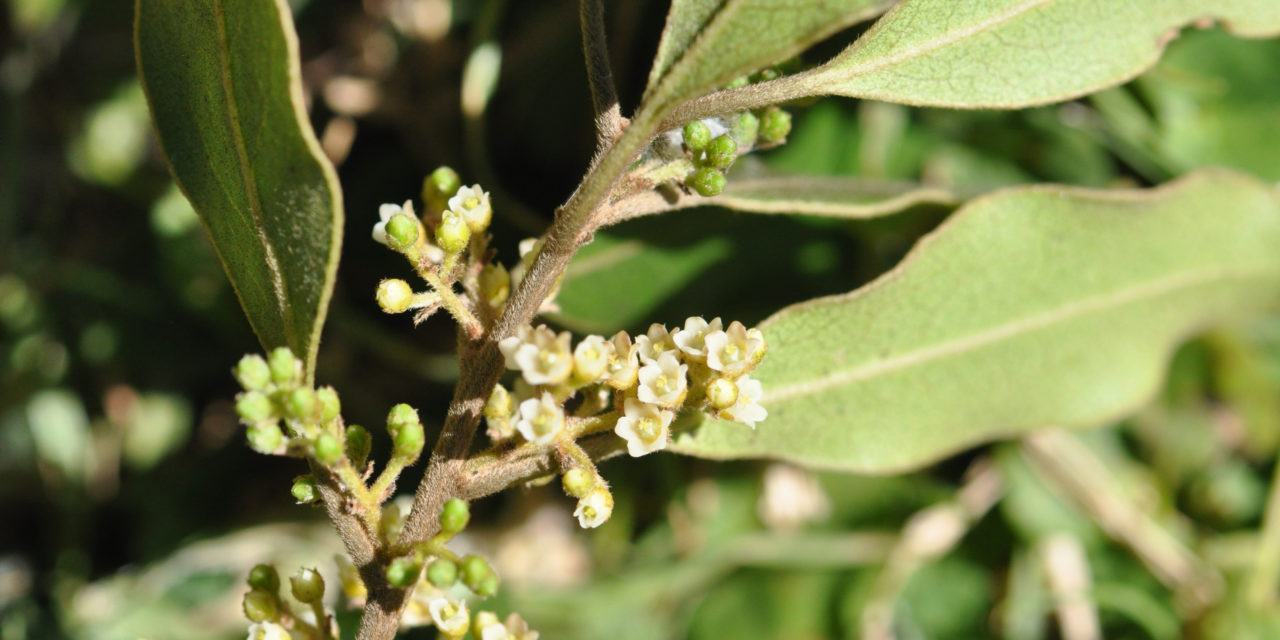
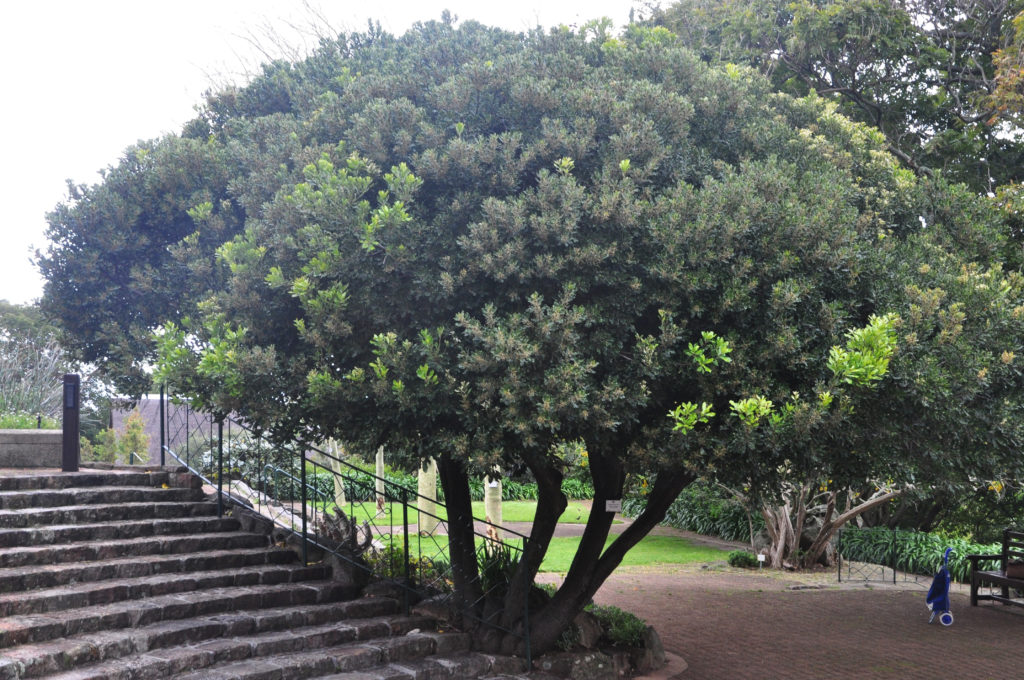
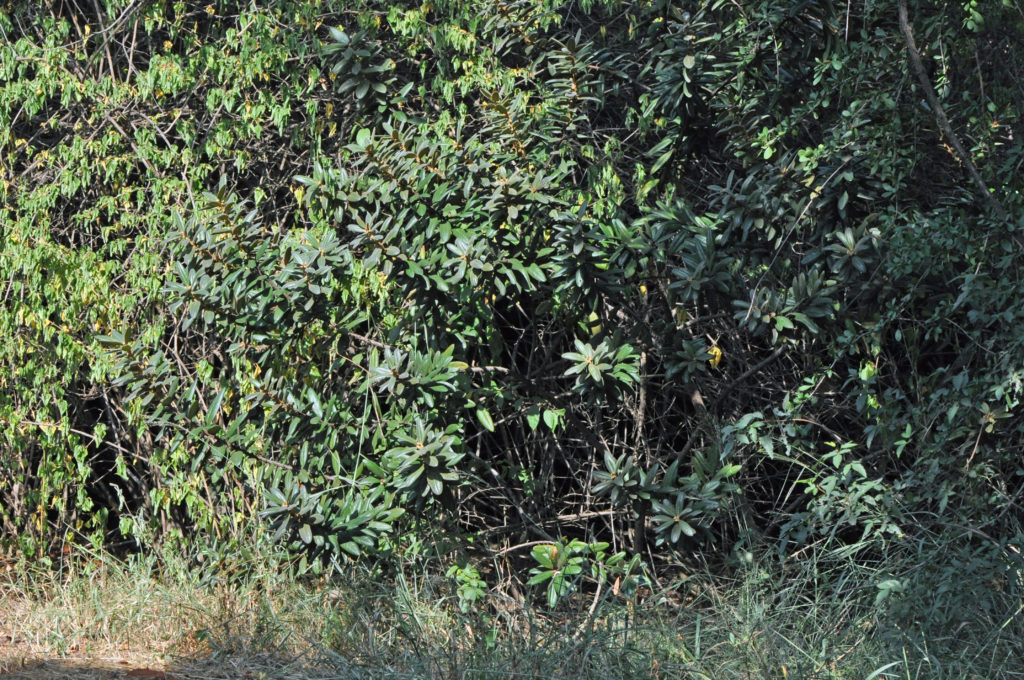
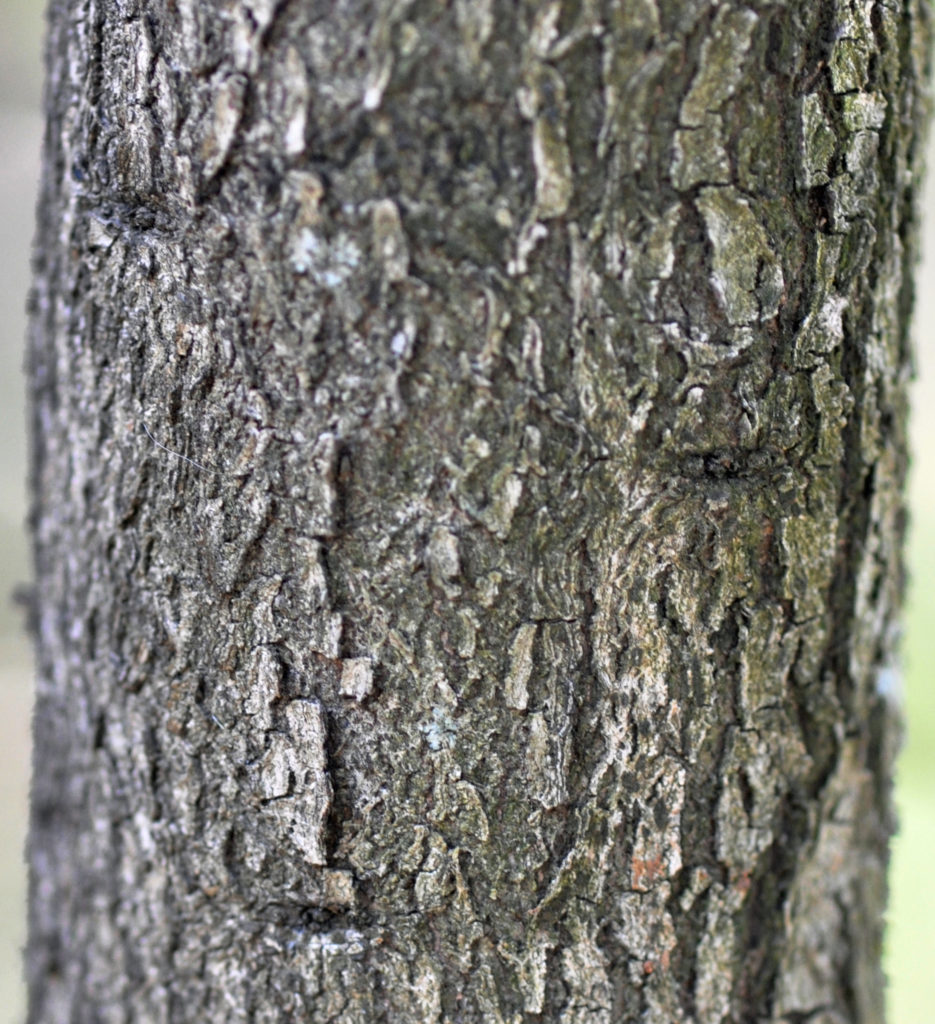
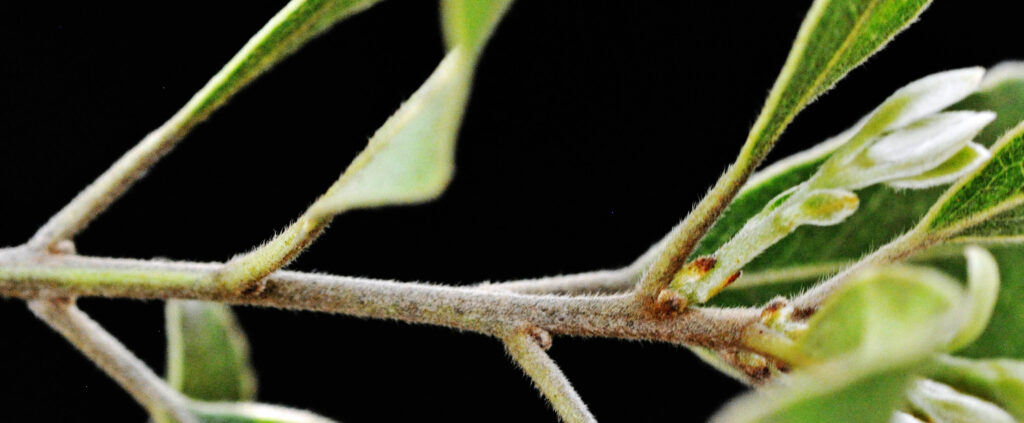
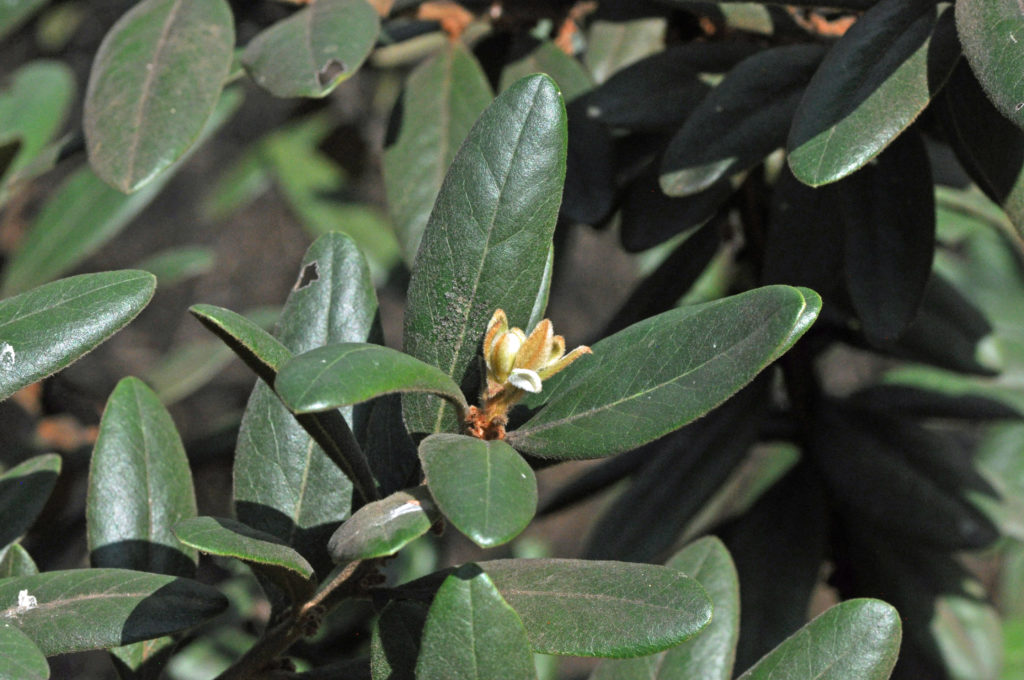
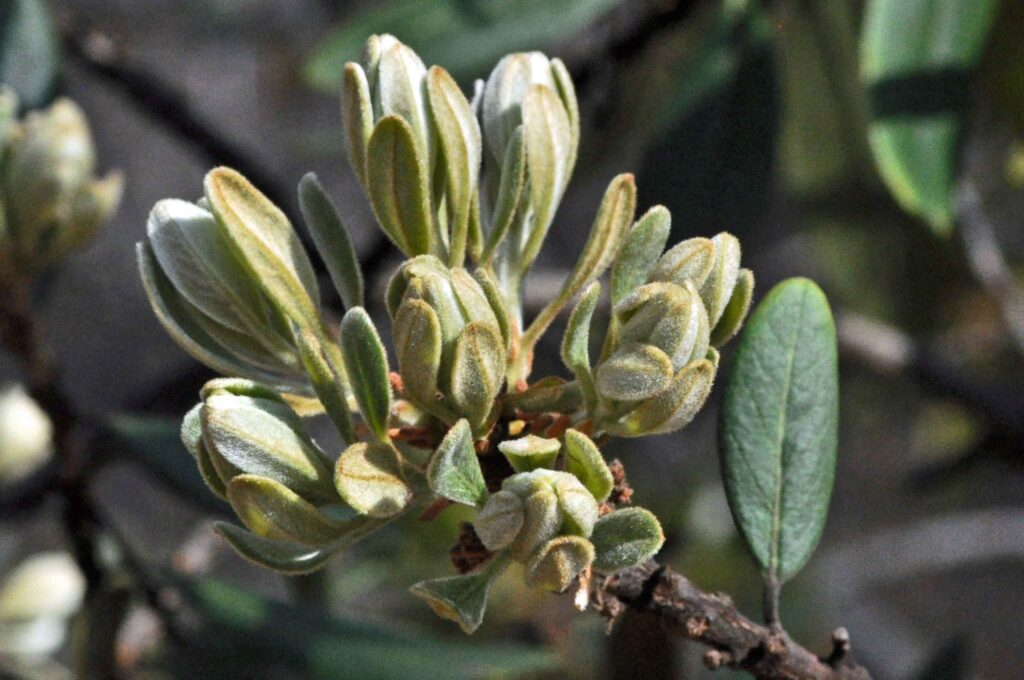
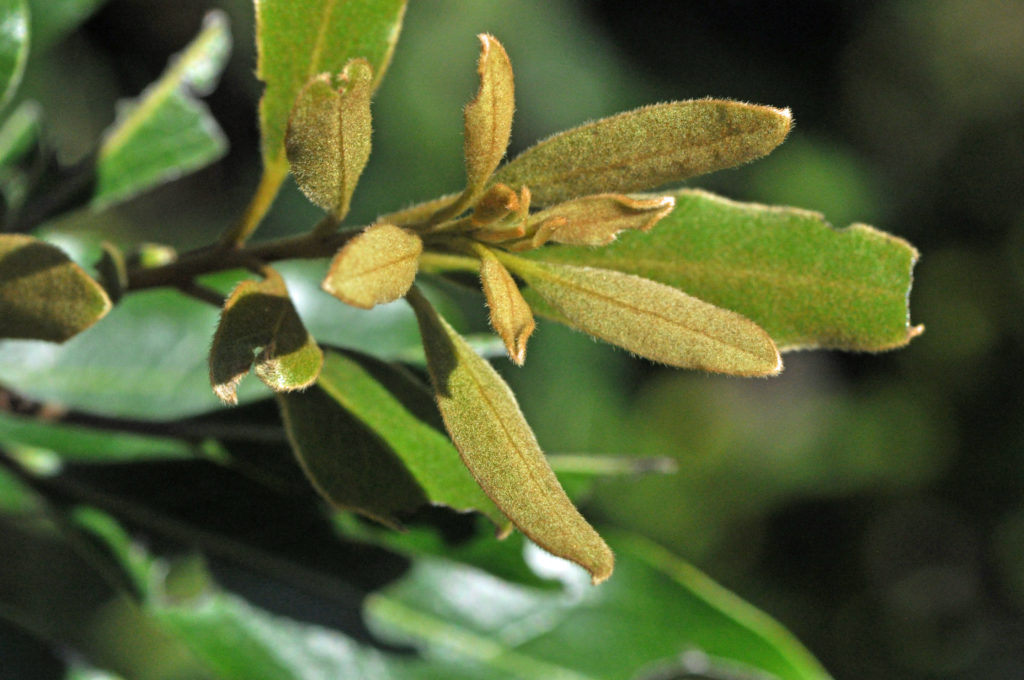
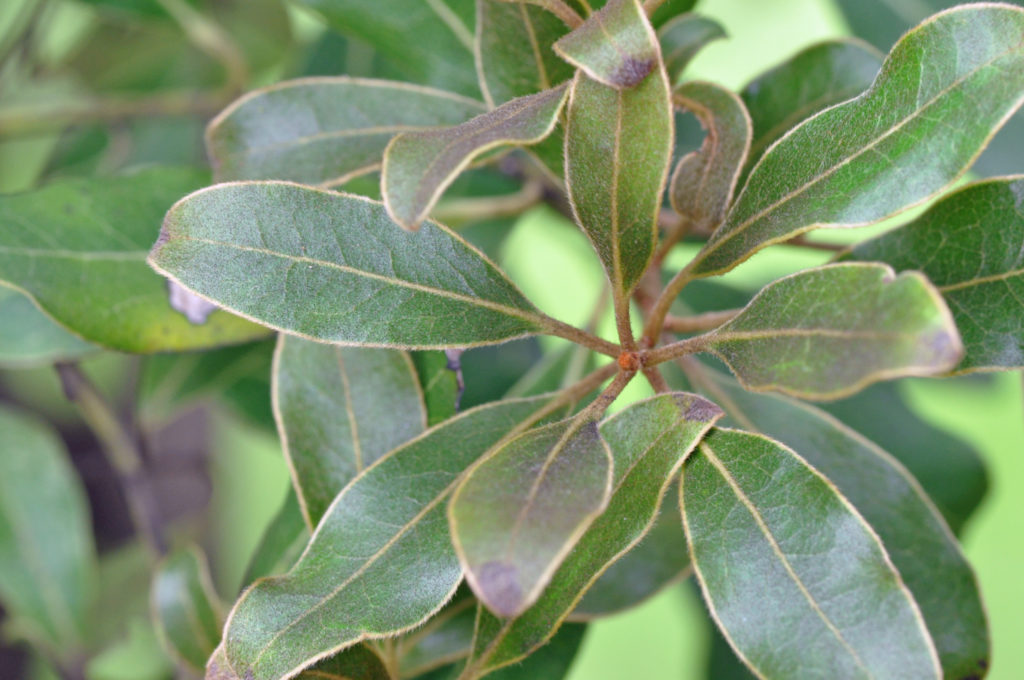
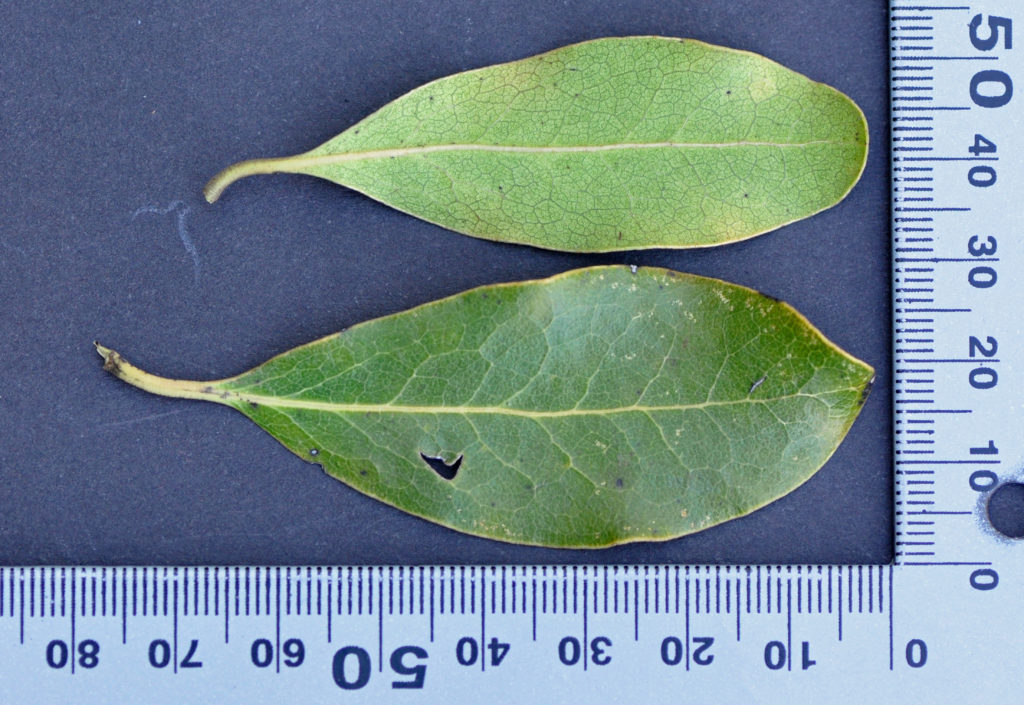
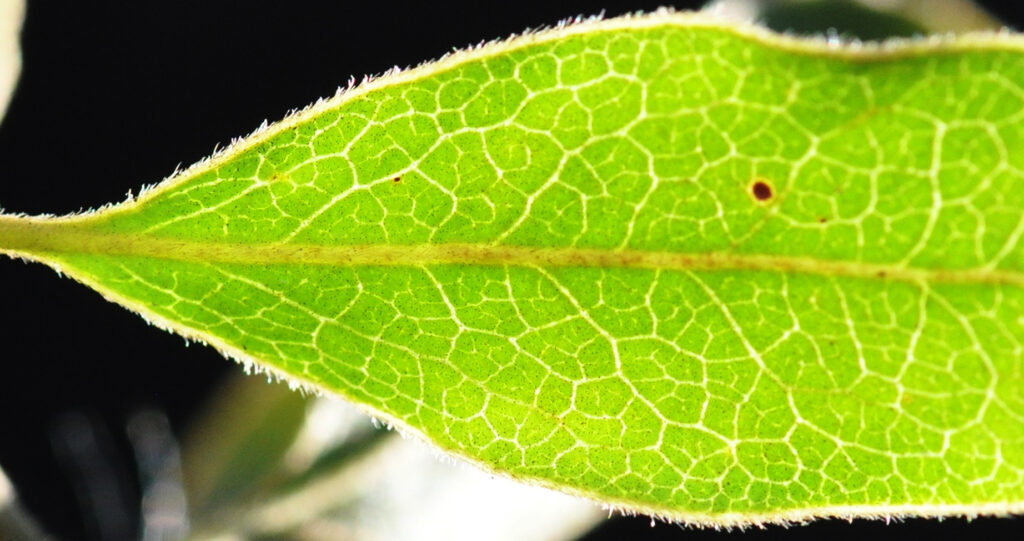
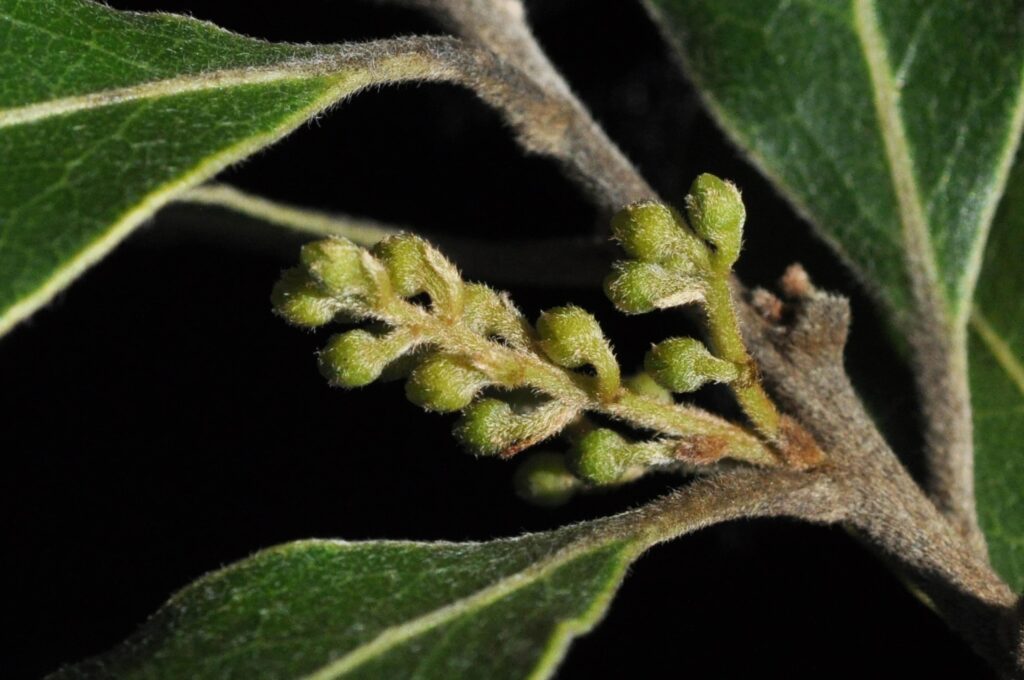
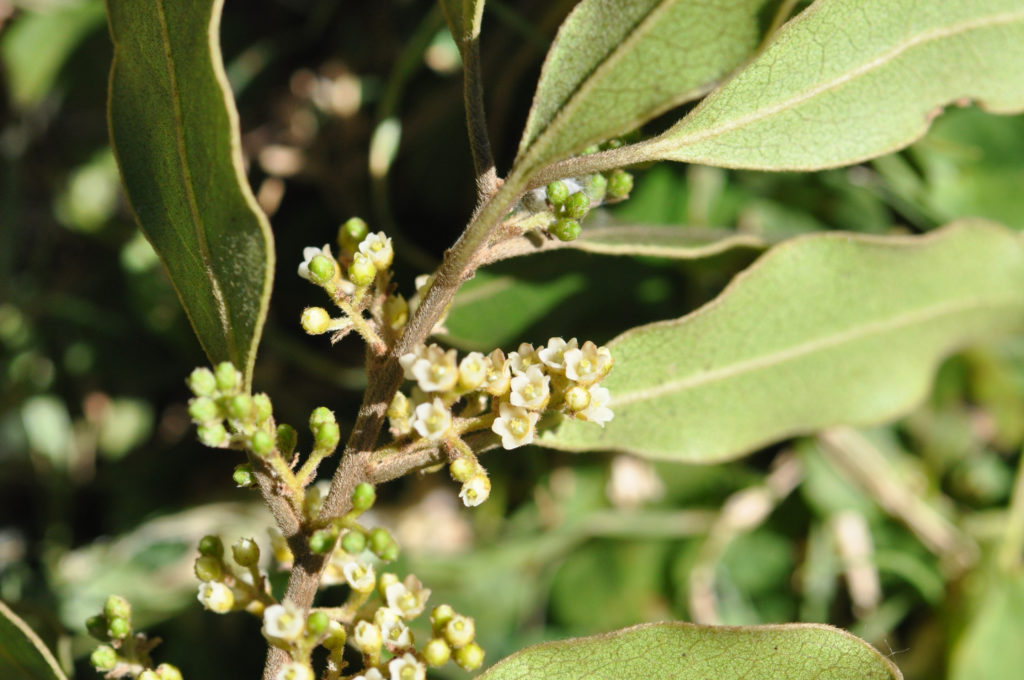
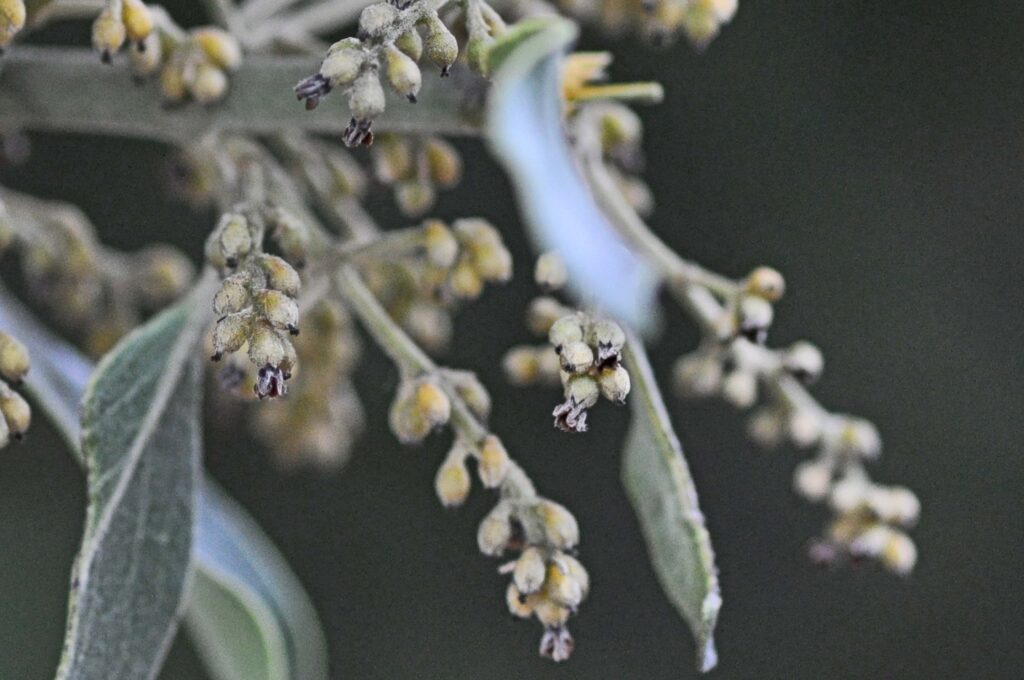
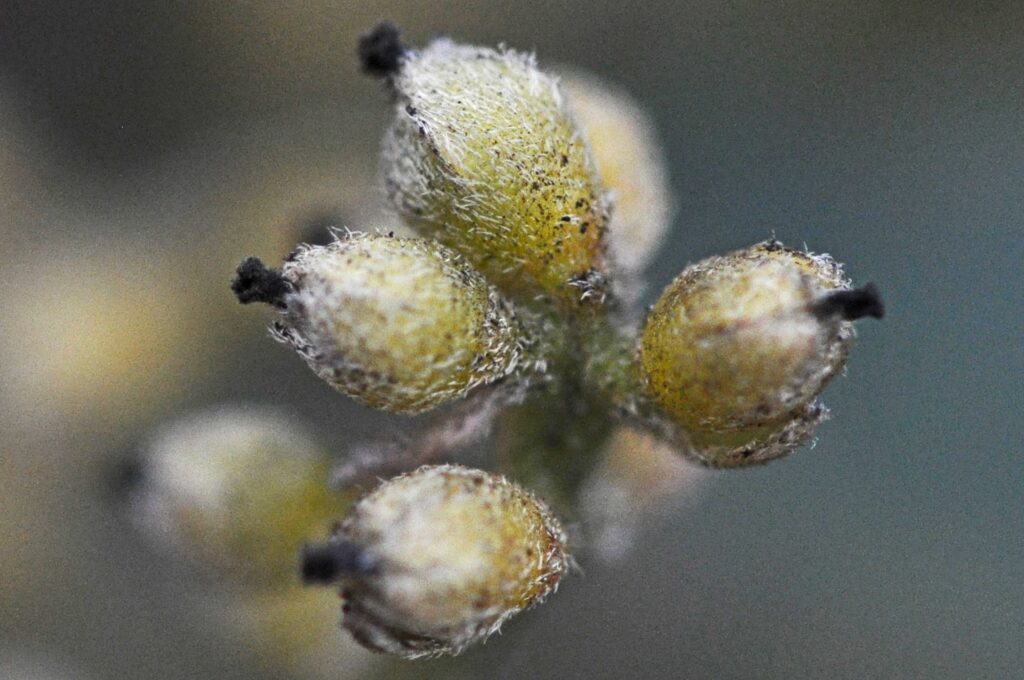
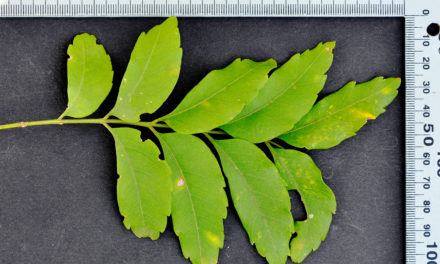
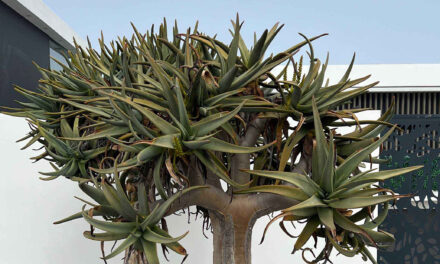
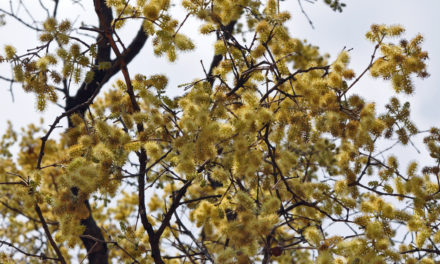
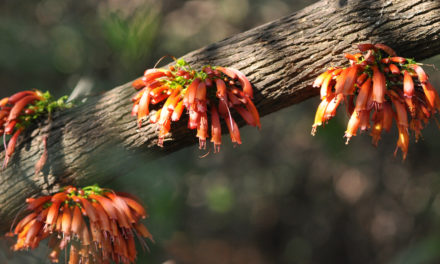
My garden is down the peninsula south of Cape Town. After being badly damaged by a storm & cut back, my tree is recovering well & now flowering prolifically. The whole garden smells sweet.